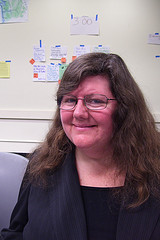Difference between revisions of "Jtm-pnw-thurs-evening"
(→Public servant Norm Rice) |
|||
| (7 intermediate revisions by the same user not shown) | |||
| Line 20: | Line 20: | ||
[http://www.ustream.tv/recorded/3821050 WATCH THE ARCHIVED VIDEO STREAM OF THESE EVENING SPEAKERS] | [http://www.ustream.tv/recorded/3821050 WATCH THE ARCHIVED VIDEO STREAM OF THESE EVENING SPEAKERS] | ||
</h3><hr> | </h3><hr> | ||
| + | |||
| + | {| border="1" cellspacing="0" align="right" cellpadding="2" style="margin-right: 1em; margin-bottom: 0.5em; margin-right: 1em;" | ||
| + | |- | ||
| + | |http://farm3.static.flickr.com/2736/4257474891_ec69f2548d_m_d.jpg <br>[http://www.flickr.com/photos/jtmpnw/4257474891/sizes/l/ ''enlarge''] | ||
| + | |} | ||
The dean of the journalism program at the University of Washington, introduces the evening. | The dean of the journalism program at the University of Washington, introduces the evening. | ||
| − | Michael Fancher, one of the organizers of JTM-PNW, and a former executive editor of the Seattle Times, says it is the right people, the right issue at the right time that brought folks together. The Puget Sound region has perhaps the largest disruption in main stream media over the last couple of years of any U.S. metro region, Fancher says. But it also may have the most active emerging new-media scene. | + | {| border="1" cellspacing="0" align="left" cellpadding="2" style="margin-left: 1em; margin-bottom: 0.5em; margin-right: 1em;" |
| + | |- | ||
| + | |http://farm5.static.flickr.com/4034/4258110091_acb8514045_m_d.jpg | ||
| + | |} | ||
| + | |||
| + | Michael Fancher, one of the organizers of JTM-PNW, and a former executive editor of the Seattle Times, says it is the right people, the right issue at the right time that brought folks together. The Puget Sound region has perhaps the largest disruption in main stream media over the last couple of years of any U.S. metro region, Fancher says. But it also may have the most active emerging new-media scene. ''(Fancher photo, left, by [http://www.flickr.com/photos/jonathanlawson/sets/72157623167998142/ Jonathan Lawson)''] | ||
In looking at participation in JTM-PNW, the biggest cluster of people registered are from civic organizations and the community. "That's really exciting, these are people who are not doing journalism themselves but they see it as important to what they are doing." Fancher introduces the three people who will provide tonight's discussion leadership. | In looking at participation in JTM-PNW, the biggest cluster of people registered are from civic organizations and the community. "That's really exciting, these are people who are not doing journalism themselves but they see it as important to what they are doing." Fancher introduces the three people who will provide tonight's discussion leadership. | ||
| Line 46: | Line 56: | ||
"Go to the people, learn from them, move them." When a real leader's task is done, the people will remark: "We have it ourselves." | "Go to the people, learn from them, move them." When a real leader's task is done, the people will remark: "We have it ourselves." | ||
| − | That is an enduring legacy a leader can leave for a society. | + | That is an enduring legacy a leader can leave for a society. ''{Rice photo by [http://www.flickr.com/photos/amerainey/sets/72157623166650110/ Ame Rainey)''] |
===Journalist Tracy Record=== | ===Journalist Tracy Record=== | ||
| − | + | [[Image:Tracy-record1.jpg|frame|left|[Tracy Record]]] | |
Record talks about going to the JTM Minneapolis convening, "The New Pamphleteers." She talks about connections -- a major point of Journalism That Matters. She talks about the Seattle police media badge she has. She never had a policy badge when she was in old media. At KCPQ, when she was a local news produced in December 2007, she met with police to get badges. Two points she wants to talk -- what the press needs from the people: | Record talks about going to the JTM Minneapolis convening, "The New Pamphleteers." She talks about connections -- a major point of Journalism That Matters. She talks about the Seattle police media badge she has. She never had a policy badge when she was in old media. At KCPQ, when she was a local news produced in December 2007, she met with police to get badges. Two points she wants to talk -- what the press needs from the people: | ||
| Line 60: | Line 70: | ||
====A warning: Siloization==== | ====A warning: Siloization==== | ||
| − | Record now warns of a problem she sees emerging -- "siloization." People announce things to their Facebook group or blog but are not sending it to the community at large. It's important to remember that ecology evolves, remember there is still some value in having touchstones -- "mass media for the neighborhood, and there is value in that." So her advice: Feed and nurture the touchstones. Don't forget they are there to go to and they are needed. | + | Record now warns of a problem she sees emerging -- "siloization." People announce things to their Facebook group or blog but are not sending it to the community at large. It's important to remember that ecology evolves, remember there is still some value in having touchstones -- "mass media for the neighborhood, and there is value in that." So her advice: Feed and nurture the touchstones. Don't forget they are there to go to and they are needed. |
===Artist Chris Jordan=== | ===Artist Chris Jordan=== | ||
| + | |||
| + | |||
| + | {| border="1" cellspacing="0" align="right" cellpadding="2" style="margin-right: 1em; margin-bottom: 0.5em; margin-right: 1em;" | ||
| + | |- | ||
| + | |http://ryanflood.files.wordpress.com/2009/10/chris-jordan.jpg | ||
| + | |} | ||
[http://www.chrisjordan.com Chris Jordan] takes pictures of giant piles of garbage. The world has a litany of big problems. He didn't engage in considering any of the big problems until he was 38. Then he started looking at happens to garbage. "It's been an overwhelming experience to learn how many horrible things are happening in our world right now." | [http://www.chrisjordan.com Chris Jordan] takes pictures of giant piles of garbage. The world has a litany of big problems. He didn't engage in considering any of the big problems until he was 38. Then he started looking at happens to garbage. "It's been an overwhelming experience to learn how many horrible things are happening in our world right now." | ||
Latest revision as of 06:17, 11 January 2010
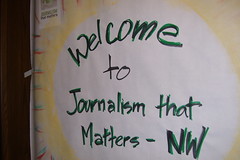
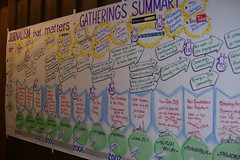
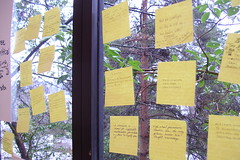
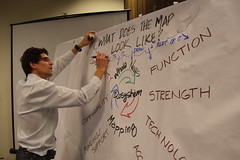
WIKI HOME /
CONFERENCE HOME /
PROGRAM SCHEDULE /
VIDEO STREAM /
RJI BLOG /
BLOG AGGREGATION
TWITTER STREAM
PHOTO STREAM /
PHOTO TAG
JTM-PNW-Thursday evening discussion
Here are notes by Bill Densmore of Thursday's evening's discussion at the Journalism That Matters-Pacific Northwest convening. More than 230 participants are participating over three days.
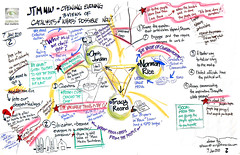 enlarge |
The dean of the journalism program at the University of Washington, introduces the evening.
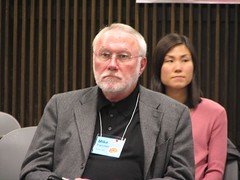
|
Michael Fancher, one of the organizers of JTM-PNW, and a former executive editor of the Seattle Times, says it is the right people, the right issue at the right time that brought folks together. The Puget Sound region has perhaps the largest disruption in main stream media over the last couple of years of any U.S. metro region, Fancher says. But it also may have the most active emerging new-media scene. (Fancher photo, left, by Jonathan Lawson)
In looking at participation in JTM-PNW, the biggest cluster of people registered are from civic organizations and the community. "That's really exciting, these are people who are not doing journalism themselves but they see it as important to what they are doing." Fancher introduces the three people who will provide tonight's discussion leadership.
- Fancher names Norm Rice, the former mayor of Seattle. "Heart and brains turn into innovation and collaboration," Fancher says of him.
- Now Sanjay Bhatt of The Seattle Times, introduces the journalism representative for tonight's discussion and names Tracy Record, editor and co-publisher of West Seattle Blog, now in its fifth year. From editor driven to community driven, from mass to community.
- Tonight's third speaker is introduced by Sherri Herndon. The speaker is artist Chris Jordan. If we don't have the role of the artist connected with the community, the community suffers. "The artist is the unacknowledged legislator of their time," said Shelly, according to Herndon. Are they ahead of the curve, seeing something that isn't being seen by others?
Public servant Norm Rice

|
Rice starts first and describes his background as a tape editor at KUMO television before becomming mayor. He tells a story about when pupil bussing as an issue in the city a citizen said she was going to vote against him because he was for bussing. He said he talk to her and couldn't convince her to change her mind. But after the discussion, she said: "I believe you heard me." That was a revelation for him, Rice said. The key question he said is: "Can you frame a question in a way that brings outs people's aspirations and dreams?"
Rice used that in much of his work as mayor -- trying to get people to express their aspirations and reams and get other people to hear and engage. "People felt there was a spirit of working to solve [the bussing] problem." In the end, people voted against bussing but for Rice. "People got to vote both their fears and their asiration."
There has to be a better way to tell stories to the press, to express ourselves. It's different than a political process. "we've got to get away from the one-day headline and the scandal and challenge leaders to do what's right."
"Go to the people, learn from them, move them." When a real leader's task is done, the people will remark: "We have it ourselves." That is an enduring legacy a leader can leave for a society. {Rice photo by Ame Rainey)
Journalist Tracy Record
Record talks about going to the JTM Minneapolis convening, "The New Pamphleteers." She talks about connections -- a major point of Journalism That Matters. She talks about the Seattle police media badge she has. She never had a policy badge when she was in old media. At KCPQ, when she was a local news produced in December 2007, she met with police to get badges. Two points she wants to talk -- what the press needs from the people:
We need questions: The totem pole
The questions are the more important part of conversation, more than answers. News organizations need questions from the pubic to do their job. She talks about a citizen who mentioned that a totem pole had been taken from a pocket park. People send in tweets all the time with questions. She asked the Parks Dept., where did the totem pole go? A day or so elapsed and it turned out the totem pole had been stolen by a gentlemen who rented the truck, went and got the totem pole and took it away. Then the local rotary club, which originally put in the pole 30 years ago started asking questions. They found out the driver of the truck. They took a house to rural Kane County. Policy finally picked up the and interrogated him for seven hours. It was on a trailer on a senior center in Oregon. The guy hasn't been charged yet. "It justme think of the value of questions, the question the little boy asked, the questions I asked, the question the rotarians asked." She says it's OK not to have all the answers, she has learned.
She urges the public to keep asking the questions -- of media people, of each other, and the what's possible questions, too. She thinks we are moving into a period where people are a little more willing to ask questions again.
A warning: Siloization
Record now warns of a problem she sees emerging -- "siloization." People announce things to their Facebook group or blog but are not sending it to the community at large. It's important to remember that ecology evolves, remember there is still some value in having touchstones -- "mass media for the neighborhood, and there is value in that." So her advice: Feed and nurture the touchstones. Don't forget they are there to go to and they are needed.
Artist Chris Jordan
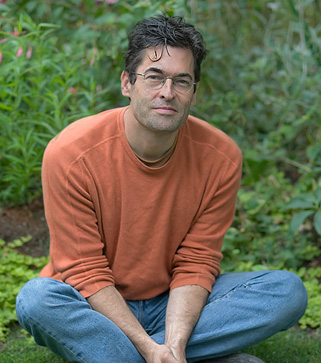
|
Chris Jordan takes pictures of giant piles of garbage. The world has a litany of big problems. He didn't engage in considering any of the big problems until he was 38. Then he started looking at happens to garbage. "It's been an overwhelming experience to learn how many horrible things are happening in our world right now."
Jordan: How to unpack complexity of 1.5 billion on Earth who lack access to drinking water? we're overwhelmed! What is it that we don't get that will allow us to make a quantum step in the face of horrifying calamities? He thinks Americans are the least connected culture "with how we feel." If we can allow ourselves to have our heart broken by any of these issues -- mass extinctions such as the last white rhino. The total number of tigers left on Earth -- 3,200.
He thinks of himself as a journalist and people rely on journalists. A photographer who cares about what they are photographing, who allows himself to care, who shows up with their heart and takes the risk of depression -- that passion shows up in the photographs and transmits directly to the viewers of the photograph. He wants to put that caring into his work.
The story in the the albatross carcasses
He says news organizations like the New York Times, FoxNews and the Huffington Post are not afraid to speak with authentic voices that allow range and anger to come through. There can be some wisdom in that, he says. In 911, the rest of the world grieved for America, we grieved less and moved right on to worrying about the economy. He's now going to show a six-minute video of albatross on Midway Island. The albatross feed their children garbage they collect from teh ocean. "And that's what they feed their babies, and they fill up with plastic to their throats until they die."
Here is what the pictures show, made in Sept. 2009 on a tiny island in the North Pacific, Midway, 2,000 miles from any population. No plastic was moved, placed, arranged, manipulated ortered in any way, he says. The pictures show beaches with carcasses of birds, feathers and bones still showing, with bellies exposed the air showing what appear to be bright little man-made objects - some visible as buttons, some appearing to bottle caps.
At least 150 people in our meeting room at the University of Washington are transfixed by the still images, set to music.
QUICKLINKS
PROGRAM SCHEDULE / VIDEO STREAMING / JTM-RJI BLOG / FOLLOW TWITTER COMMENTARY WIKI HOME / JTM-PNW HOME PAGE
